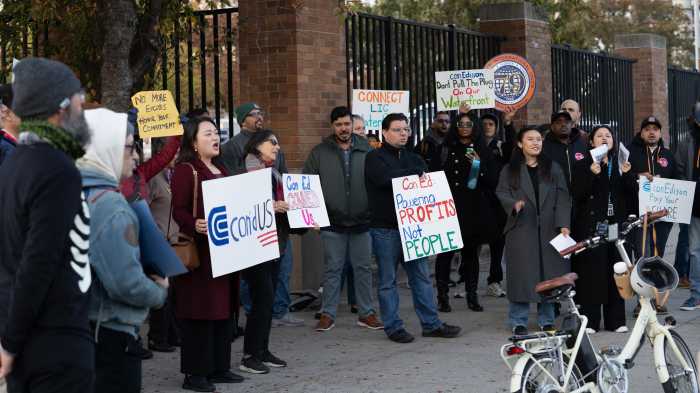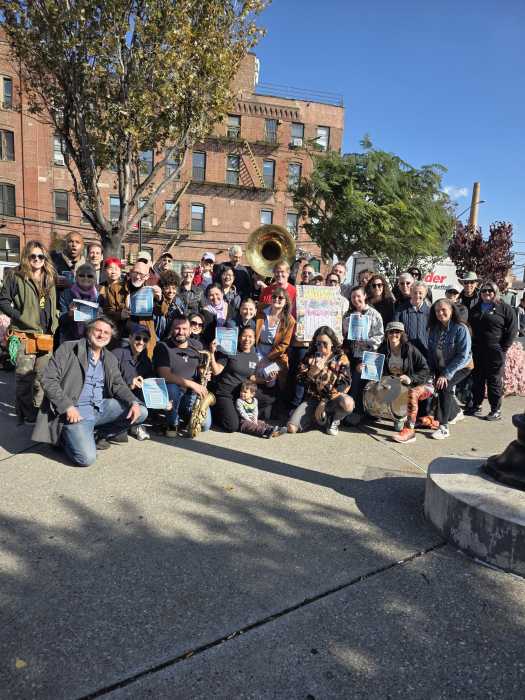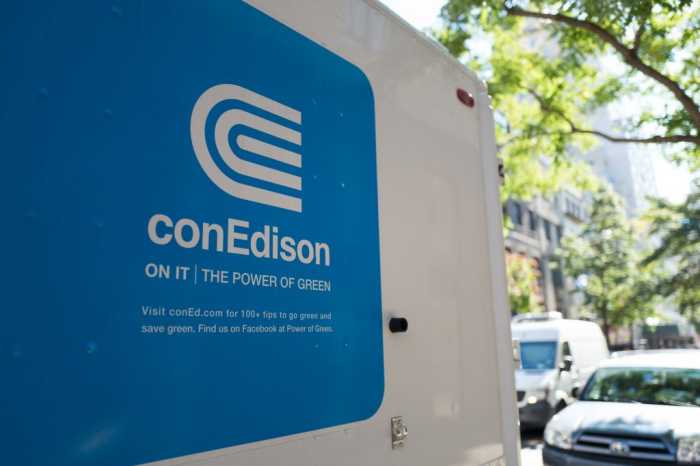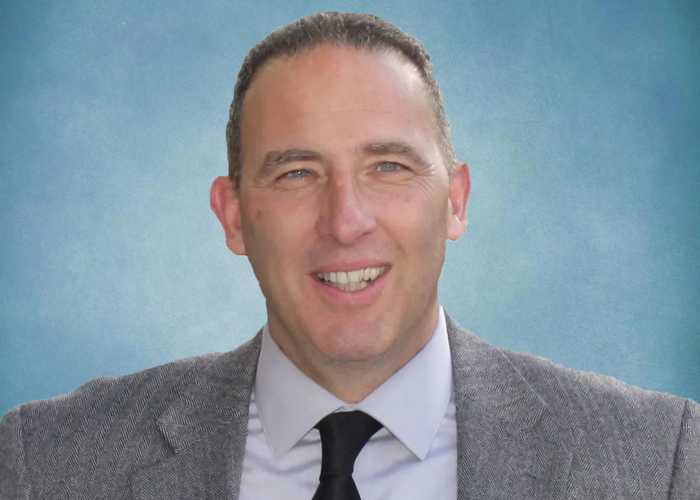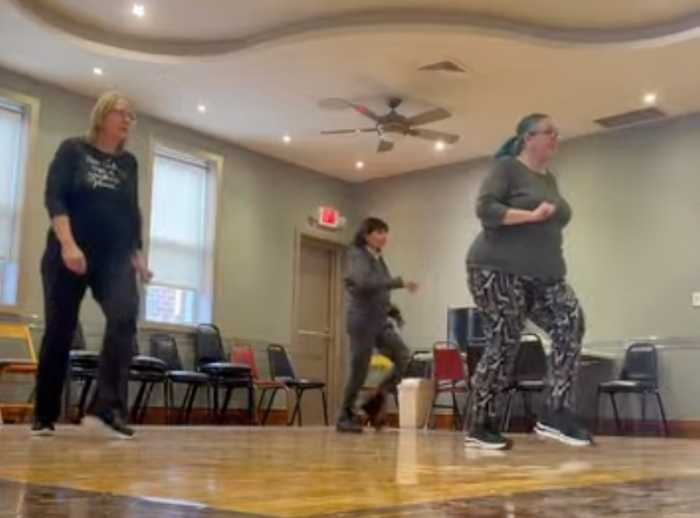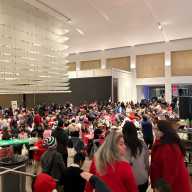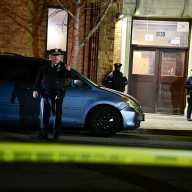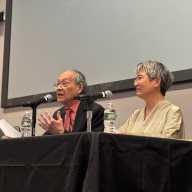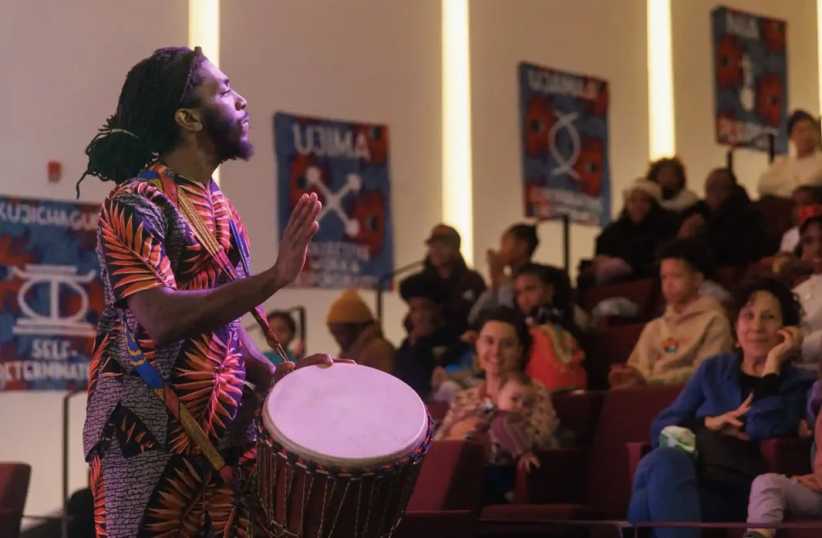Around three dozen protesters and local Queensbridge residents joined a rally against the OneLIC Neighborhood Plan at the Jacob A. Riis Neighborhood Settlement in Queensbridge Thursday afternoon, calling on Council Member Julie Won to vote against the rezoning plan and “send it back to the drawing board” unless specific investment in the Queensbridge community is included in the final plan.
OneLIC, which covers 54 full or partial blocks in Long Island City, aims to transform the neighborhood with a series of new zoning rules that would create almost 14,700 new housing units, with 4,300 of those earmarked as affordable.
The Department of City Planning has stated that OneLIC plan aims to create over 14,400 new jobs for the neighborhood alongside over 3.5 million square feet of commercial and industrial space. The plan also aims to expand access to the East River waterfront by creating a continuous waterfront from Gantry Plaza State Park to Queensbridge Park.
The City Council is set to vote on the plan on Oct. 30 as part of the final stages of the city’s Uniform Land Use Review Procedure (ULURP), with the City Planning Commission voting 11-1 in favor of the plan last month.
But critics of the rezoning have consistently urged Won to vote against the plan in its current format, stating that the plan must include a series of community priorities.
A call for investment
At the Oct. 23 rally, organized by the Western Queens Community Land Trust, opponents of the OneLIC plan and Queensbridge residents urged Won to vote against the plan unless it included investment in the Queensbridge community. They said the NYCHA developments in Queensbridge are in dire need of investment, with many residents dealing with issues such as mold infestations and crumbling infrastructure.
They also called for more schools for the community and the full restoration of Queensbridge Baby Park to be included in any rezoning plan.
The Parks Department is currently carrying out extensive renovations at Queensbridge Baby Park to transform the site into an open green space with a seating area, ping pong tables, a paved plaza and improvements to landscaping. However, critics have frequently argued that the Parks Department is only renovating a small portion of what was formerly Queensbridge Baby Park and stated that a number of lots that used to form part of the park are currently being used for agency parking and storage.
Protesters further stated that the conditions that Community Boards 1 and 2 outlined when approving OneLIC in June have not yet been added to the plan as the Council prepares to vote on it next week. They said the current iteration of the plan does not include enough affordable or deeply affordable housing, stating that the 4,300 affordable units included in the plan will not be affordable to low-income residents.
Protesters, who reflected a mix of Queensbridge residents and individuals who do not live in the neighborhood but have been consistently against the plan, continuously chanted slogans such as “No OneLIC” and held placards stating that the plan would displace them from the neighborhood. Protesters also assisted residents in sending emails to Won’s office and held an open mic session allowing bystanders an opportunity to make their voices heard.
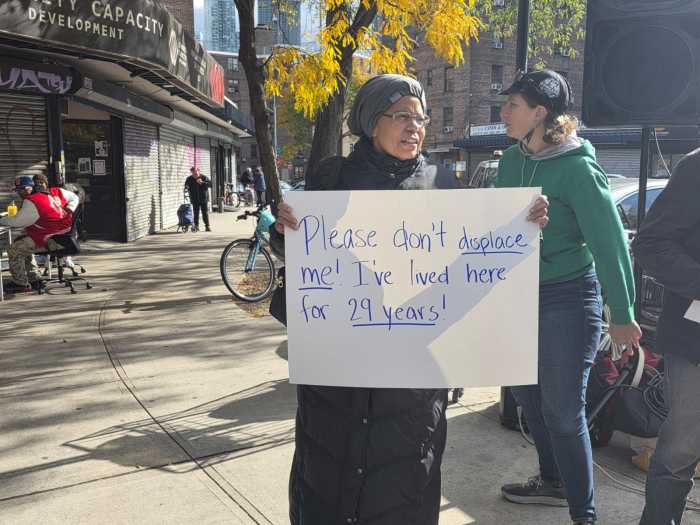
Donal Cogdell, a member of the Hope Astoria Church who led the Oct. 30 protest, said the rezoning represents “billions” in investment for luxury development at the waterfront in Hunters Point while ensuring that neighboring Queensbridge continues to go “underfunded.”
“People are going without heat. People are going with asbestos in their apartments,” Cogdell said. “We have hundreds of apartments that can’t be lived in because of asbestos, because it’s just unlivable, and the city has not done a good job of investing right here where they’re supposed to. And so this has to change.”
Cogdell said he believes Won has a “good heart” and hoped that she would hear the concerns of the Queensbridge community during the final stages of negotiations for the plan. Cogdell added that Queensbridge residents felt excluded from the lengthy public engagement process that preceded ULURP and said many neighbors were unaware of what the rezoning entailed.
Won’s representatives said the council member has always had the Queensbridge community at heart throughout the public engagement process that took place prior to the plan entering ULURP in April, stating that they had knocked on 8,000 doors in Queensbridge to ensure that local residents could have their say.
But residents who attended the protest have raised strong objections to the plan in its current format.
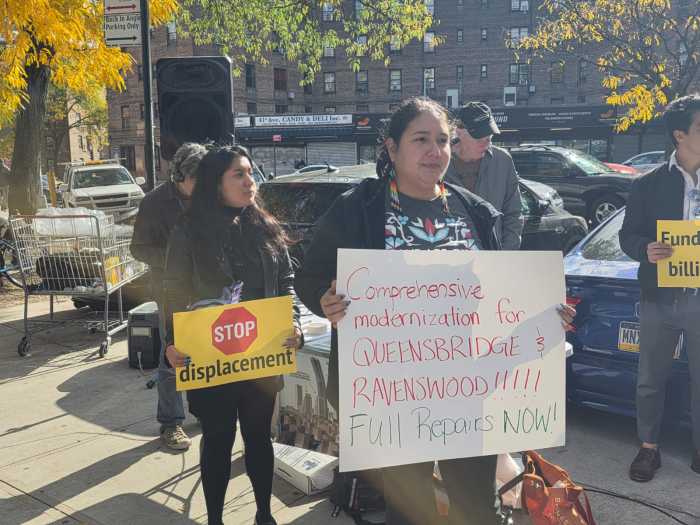
Christina Chaise, who was born in Queensbridge and now lives in Ravenswood Houses, said she has seen the “same dang problems” in Ravenswood and blasted the Department of City Planning for having the “audacity” of proposing investment all around Queensbridge but not in the neighborhood.
“We’ve been waiting years just to live in dignity, and it ain’t right. It’s not right that you have the audacity to propose luxury housing right across the street,” Chaise said.
She said Queensbridge residents are “fighting over breadcrumbs” with one another while a slew of luxury developments pop up in nearby neighborhoods.
Mary Jobaida, who has lived in the community for 25 years, said she was concerned that the rezoning would displace Queensbridge residents, stating that residents earning a salary of $45,000 per year would be unable to afford the rents in new developments introduced by the plan.
Western Queens Community Land Trust member Pamela Herrera, on the other hand, described the rezoning as a “slap in the face” to the local community and said OneLIC was an “attack on the community” because it would displace residents and erase local culture.
“I think every single one of you has a voice, and you can fight back,” Herrera said. “You can urge your Council Member Julie Won to vote ‘no.'”
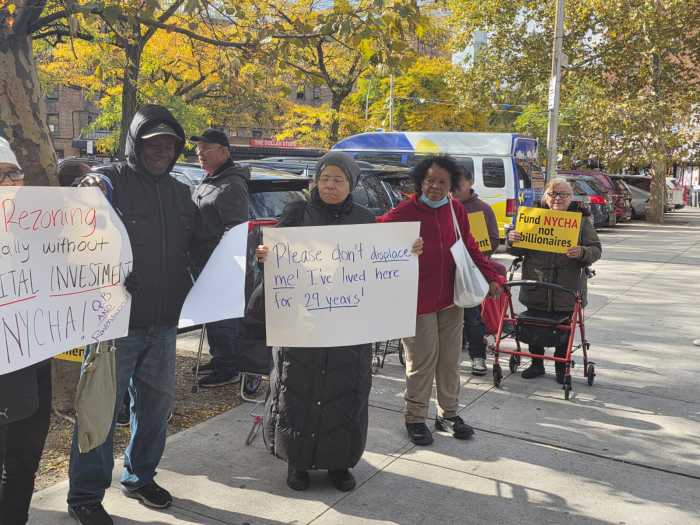
LaShawn “Suga Ray” Marston, a community activist and WQCLT member, vowed to sue Won and the city if the plan is approved in its current format and signaled that he would engage in more “radical” protests against the plan in the future, including actions such as sleep-outs and chaining himself to buildings.
“Desperate circumstances call for desperate measures,” Marston said. “We’ve got to be a little bit more desperate.”
Won’s ‘minimum requirements’ for OneLIC
Won did not reply to a request for comment but has consistently stated in the past that she will vote against the plan unless it includes a number of community guarantees. Won’s “minimum requirements” include permanently affordable housing at a range of income levels, including family-sized units, using a combination of public sites and Mandatory Inclusionary Housing (MIH) on private sites.
Additional priorities include the creation of new public open spaces — especially beneath the Queensboro Bridge and its ramps, currently used by the DOT and Parks Department for maintenance. Won said redeveloping these sites would restore public land and better connect Queensbridge Houses to the broader LIC community.
To address what she called a “critical” need for school seats, Won urged the city to site and build new schools and complete those already underway, such as the Court Square and Hunters Point South Parcel C K-8 schools.
She also called for new capital funding for sewage and plumbing infrastructure to address current flooding and support future development. At Queensbridge Houses, Won pressed for immediate maintenance and upgrades, including the rehabilitation of vacant, deteriorated units.
Community boards weigh in
Community Board 1 Chair Evie Hantzopoulos said Won is “fighting” behind the scenes to ensure that those minimum requirements are included in the plan before next week’s Council vote and noted that it is ultimately “the city who controls the purse strings.”
Hantzopolous said Community Board 1’s conditions included a $100 million investment in the NYCHA complex at Queensbridge and said it is now up to the city to ensure that such an investment is included.
“They (residents) have been asking for repairs. They sometimes have no electricity. They have leaky ceilings. There’s a whole host of issues that they have just had to deal with for decades And so the disinvestment is unacceptable,” Hantzopolous said.
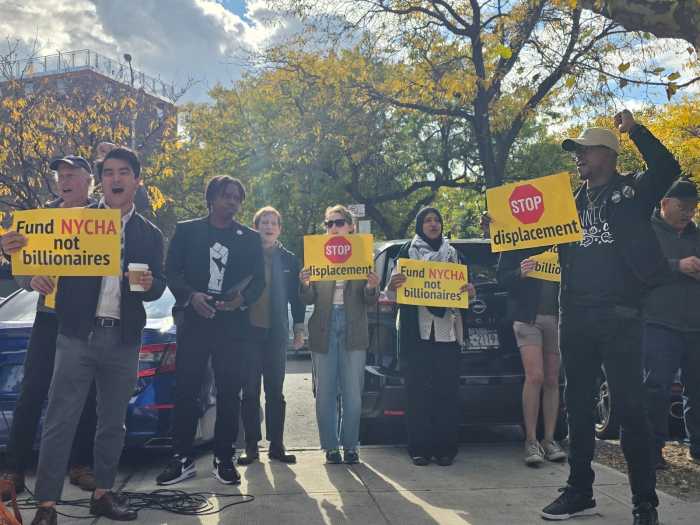
Community Board 2 Chair Anatole Ashraf also stated that he expects negotiations are ongoing behind the scenes and expects to see changes to the OneLIC plan ahead of the vote next week.
“We understand that this stage of the process is the moment for negotiation, and Queens CB2 is depending on our Council Member to negotiate on behalf of the district and incorporate as many of the conditions we requested as possible,” Ashraf said in a statement.
He added that at least one of CB’2 conditions has been included in the current iteration of the plan, noting that OneLIC now boasts a 750-foot height limit near Queensbridge Houses, which Ashraf stated brings developments in line with nearby Court Square.
“Queens CB 2 believes OneLIC is a generational opportunity to deliver real, inclusive public benefits—more affordable housing, more school seats, better infrastructure, and a stronger, more equitable Long Island City. We sincerely hope the City Council votes to pass the plan on Wednesday, October 30, with as many of the community-driven conditions incorporated as possible.”
Ashraf noted that the board voted 37-7 in favor of the plan with conditions and received 378 pieces of written testimony. He said 67.5% of people expressed clear support for the plan in addition to 19.6% who offered mixed or conditional support. A total of 13% of people expressed clear opposition to the plan, often citing concerns over issues such as affordability.
A DCP spokesperson said the agency would not comment on ongoing negotiations but described the rezoning as “historic” and added that the current iteration already includes a number of community priorities.
The spokesperson said the current plan unifies the waterfront from Gantry Plaza State Park to Queensbridge Park as a “large, vibrant public space,” stating that the plan also includes an incentive for developers to include public plazas in their projects.
“Queensbridge Baby Park is at the forefront of our minds as we continue productive conversations with the councilmember,” a DCP spokesperson said. “We are encouraged by the broad support — including the local community board’s approval — and look forward to getting all parties to a yes.”


